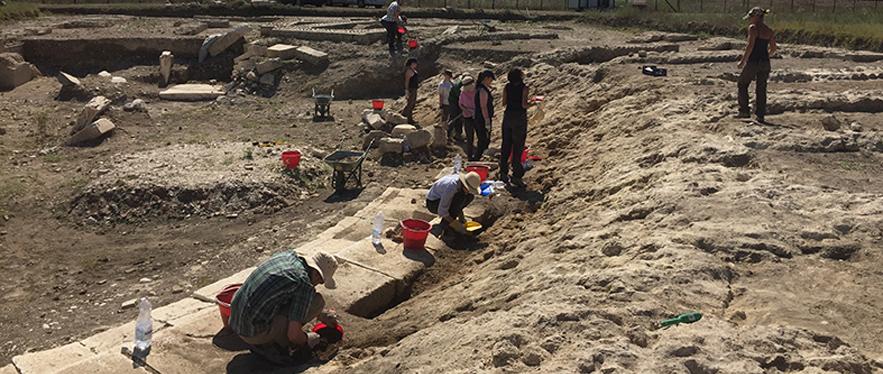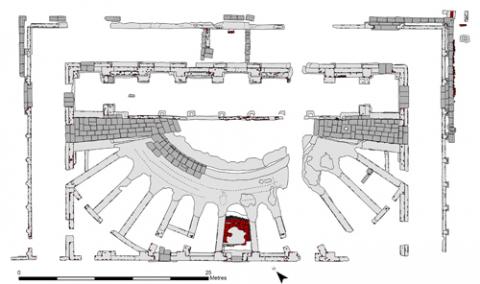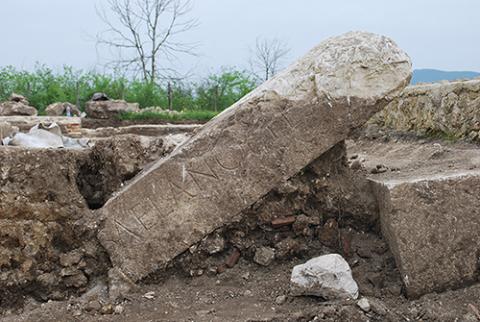
Building on the results of the geophysical surveys (2010-12) and following a preliminary check of the state of preservation of the buried structures (2013), the Comune di Pignataro Interamna purchased a sector of about 1.6 ha within the urban area of Interamna Lirenas, broadly corresponding to the western side of the forum. This initiative met the legal requirements set by the Italian Ministry of Culture (MiBACT) for the launch of the full excavation of the theatre (2014-).

Plan of the theatre (as of September 2017)
Our preliminary results date the theatre to the second half of the 1st c. BC, a moment of special significance in the history of the town. The semi-circular seating area (cavea) had a capacity of up to 1,500 spectators and was contained within a rectangular structure which supported a large roof (with a span of about 24 m). The building was in fact a roofed theatre (theatrum tectum or odeum), an architectural type that was considerably less common than its open-air counterpart (the latter being well-attested, for example, in the nearby towns of Aquinum, Casinum and Minturnae).
The main building was surrounded on three side by a broad corridor (also roofed), made accessible from the outside through several entrances of variable size and importance. This corridor was not just a passageway, but also provided an elegantly-decorated reception space for the spectators as they were waiting for the start of the performances. From the corridor it was possible to access a) the main seating area through two passageways paved with large limestone slabs (aditus maximi) and b) the stage itself (scaena) by way of three monumental doorways. Little remains of the stage as such (originally featuring a wooden floor), but we believe it to have been richly decorated with fine marbles specifically imported from various parts of the Mediterranean (as attested by the recovery of many such fragments).
We know basically nothing about the individual(s) who might have commissioned this building or who might have contributed the resources necessary to its construction. However, the fragment of an inscription in big letters (recovered in secondary deposition within the theatre) records the name of a well-to-do freedman (Anoptes), who must have been involved in some form.

The inscription recording (part of) the name of the freedman Anoptes
Although its overall plan has being brought to light almost entirely, various parts of the theatre are still under excavation and the Comune di Pignataro Interamna is committed to a timely conservation of the archaeological structures as well as to the general maintenance and development of the site as a whole.
